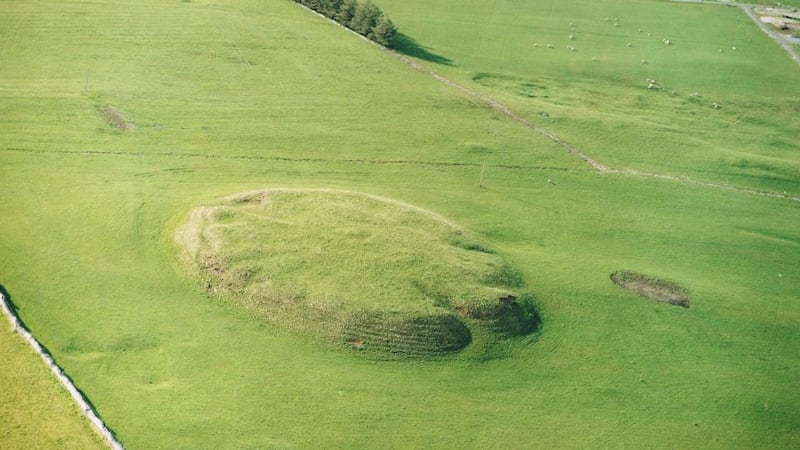When Queen Maeve of that infamous Cooley cattle raid made Roscommon’s Rathcroghan her royal home, it was already known as a cult or ritualistic centre.
A new geophysical survey of the area this summer has found further evidence of its similarity to Antrim’s Navan fort and Meath’s Tara as an “óenach” or place of mass assembly – a type of pre-Christian Stradbally or Slane.
The non-invasive survey by NUI Galway’s earth and ocean science, natural science, archaeology and geography schools used ground-penetrating radar and other techniques.

The project confirmed more detail on the existence of two large pre-Christian temples built on Rathcroghan and an associated mound, with both being approached by funnel- shaped avenues.
These wooden temples would have been built over when the area became a fiefdom for the O’Conor kings of Connacht in the later medieval period, the researchers said.
NUIG archaeologist Joe Fenwick and Gary Dempsey of the Rathcroghan visitor centre said the site, northwest of the Roscommon village of Tulsk, is already known as one of four major royal locations in ancient Ireland.
It has been mentioned in medieval Irish literature.
The others are Meath’s Tara, Armagh’s Navan fort, and Kildare’s Knockaulin.
Excavations directed by Dr Niall Brady at Tulsk mound had revealed activity dating back to the late Stone Age.
It has been the focus of two major archaeological research programmes, and was nominated for Unesco world heritage status three years ago.
Most of the important sites in the complex date from the late Bronze Age and the Iron Age.
A large-scale archaeo-geophysical imaging project conducted by NUIG in the 1990s had revealed a complex ritual monument, focused on Rathcroghan mound.
It identified a 360m enclosure, formed by a substantial five-metre wide ditch.
It also identified an enclosure north of the mound, and a series of avenues.
In June, a student training exercise was undertaken by NUIG.
Mr Fenwick said a conductivity survey of a larger area shows the impact of glacial drift, and why it was selected – as an elevated glacial ridge.
"The late Sir William Wilde had described it as the Tara of the west," he said.
It appears to be of a similar date to Tara as a religious centre.








